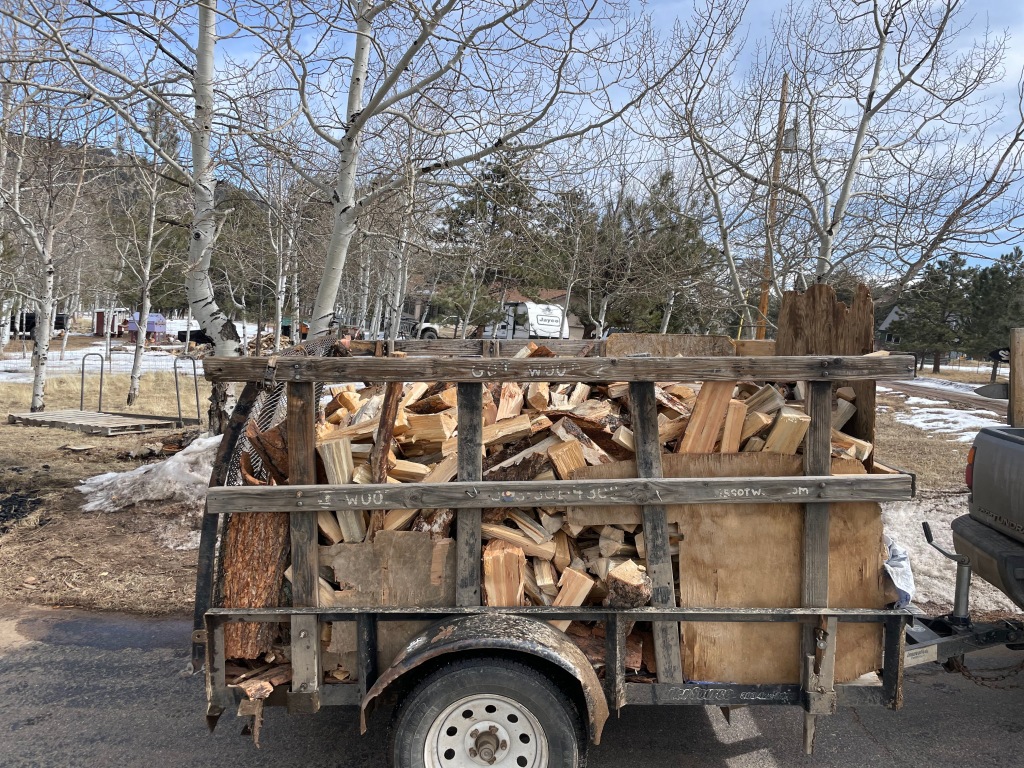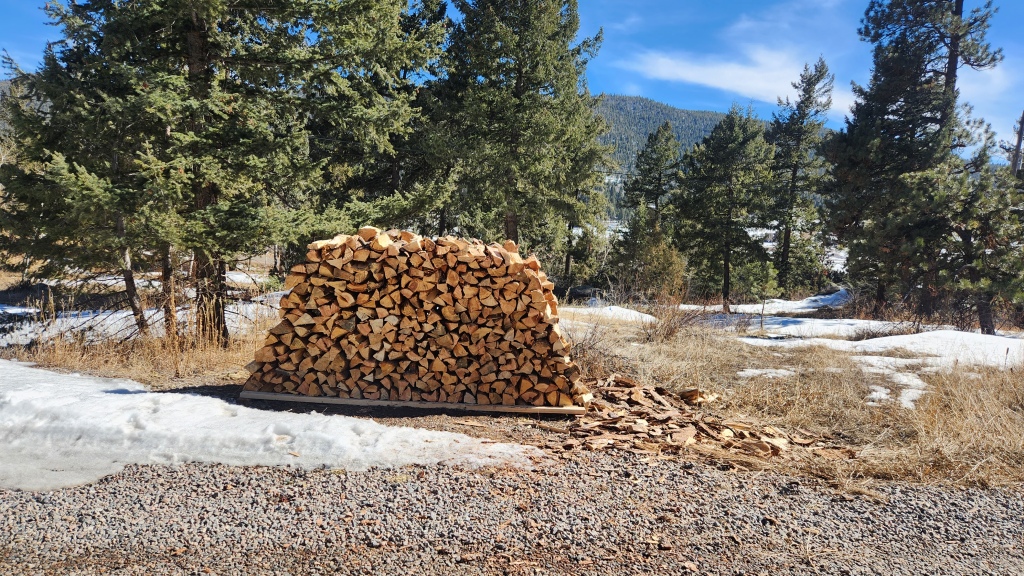In this blog, I’ll be covering a VERY controversial firewood topic, so buckle up.
It isn’t very often, but on occasion, we have a customer dissatisfied with their firewood order due to a differing view on what is a cord vs a true cord vs a loose cord, etc.
Jim (my dad and owner of J Wood, for anyone new here) began selling cords of wood in 2014, but you need to know a little history.
“My career in wood began in 2010 when I answered an ad in the Hustler for a position as a “swamper” for a reputable local tree service company. I worked off and on “swamping” for this company for 4 years.”
Jim, of J Wood

Within this company, Jim learned the ins and outs of the tree service business. He then began a partnership with a friend that unfortunately ended after many years. This partner didn’t have as much experience with the size of a cord. Delivering “loose cords” as an example to not fill the cubic feet quota and make a little extra. To be fair to this person, it isn’t an uncommon occurrence.
“I was inclined to believe my partner had more experience than I in the business. It took around 4 years for me to realize we were learning different things but in the same time frame. I respected his opinion and advice for many years. After our separation, it felt like a breath of fresh air to do things my own way.”
Jim
If you’ve met Jim, you know he has incredible integrity. It’s never been in him to cut corners or be dishonest in any way.


“Since I started out solo, I have made my highest priority delivering seasoned loose cords which always stack up to at LEAST 120 cf. I have personally stacked over 100 loose cords since 2014 and they always equal 120 cubic feet stacked.”
Let’s pause to define “cord” and “loose cord” and “true cord”.
According to Encyclopedia Britannica, a cord is the “unit of volume for measuring stacked firewood. A cord is generally equivalent to a stack 4 × 4 × 8 feet (128 cubic feet).”
For all intents and purposes, a “true cord” is just the definition of a “cord.”
Britannica also says: “The useful amount of wood a cord actually contains varies greatly, depending upon such factors as the type of wood, the size and straightness of the pieces, and the amount of bark present. A tree with a usable height of 40 feet and a circumference of 6.25 feet will contain about one cord of wood.”
There isn’t a reputable definition of a “loose” cord because it’s exactly what it sounds like. A loose cord is an easier format for the firewood provider to pack and deliver. A loose cord is also known as a “thrown” cord because you cut, buck, and split the wood, and then throw it into a trailer for transport. Loose cords should cover more cubic feet, around 180 to be exact (though it’s not exact and that’s the point). If you’re throwing logs into the back of a trailer, they are naturally going to cover more area. There’s more air in between. When you “stack” the cord, there’s less air/space in between.

There will always be differing opinions and discrepancies depending on the wood, how it is split, how it’s stacked, how you measure it, etc.
“I am more than happy to accommodate any customers’ requests, desires, wants, needs.”
Jim
So, if you’re a Particular Paul, (or a Tired Terry), you can order a “stacked” cord. And with this, you’ll receive a true cord, stacked that measures 4x4x8′.
The stack costs $500. +$100 to stack in trailer. +$100 to stack on site. And if you think about the cost of a living wage, the seasoned wood, and all the factors, $700 is a bargain.
“The value of MY time is something I’ve learned in my 50s. It takes all day (8 hours) to buck, split, stack and deliver a True Cord.”
Jim
A stacked cord costs more. Because Time, Effort, and Energy.
Alex, Jim’s daughter
And if you’re a Relaxed Rob, or a Chill Chuck, you can order a loose cord for a little less cost, and stack it yourself. You also don’t need to stack wood at all, you can bring an arm-full of wood in from the pile as needed.
Since 2018, (because that’s as far as my records go), J Wood has had over 300 customers. We’ve only had 2-3 complaints about the size of the cord that we deliver. That’s a pretty reputable track record.
Here’s a gallery of our most recent stacking with measurements for your visual belief.







Hope this cleared up any thoughts you might have had about what a cord is, and how it measures up!
And for you wood enthusiasts, the word CORD (not cHord) came about because that’s what they used to tie up the firewood stack.


Leave a comment